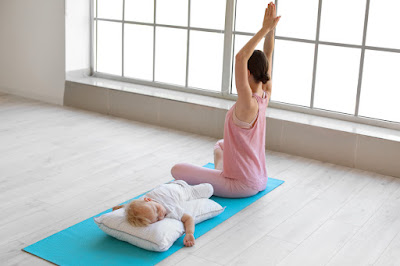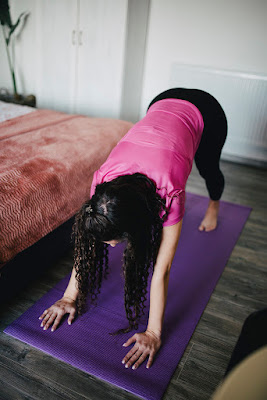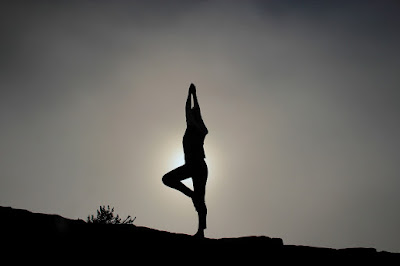Yoga is an ancient practice that offers a myriad of physical and mental benefits. Starting a yoga practice at home as a beginner can be both rewarding and transformative. Here's a step-by-step guide to help you embark on your yoga journey from the comfort of your own space.
1. Set Up Your Space
Choose a quiet, clutter-free area in your home where you feel comfortable practicing yoga. Use a yoga mat or a non-slip surface to prevent sliding during poses. Consider adding elements like candles, incense, or soothing music to create a calming atmosphere.
2. Begin with Basic Poses
Start with foundational yoga poses that are gentle on the body and easy to follow. Poses like Mountain Pose (Tadasana), Child's Pose (Balasana), and Downward-Facing Dog (Adho Mukha Svanasana) are excellent for beginners to build strength and flexibility.
3. Focus on Breathing
Breath awareness is integral to yoga. Practice deep, mindful breathing (pranayama) as you move through poses. Inhale deeply through your nose, filling your lungs, and exhale slowly, releasing tension and stress.
4. Follow Online Classes or Tutorials
Utilize online resources such as YouTube tutorials or beginner-friendly yoga apps. These platforms offer guided sessions led by experienced instructors, providing instructions on proper alignment and modifications.
5. Gradually Increase Difficulty
As you gain confidence and familiarity with basic poses, gradually introduce more challenging postures. Warrior poses, Tree Pose (Vrksasana), and Bridge Pose (Setu Bandhasana) are excellent intermediate poses that build strength and balance.
6. Practice Mindfulness and Relaxation
Yoga isn't just about physical postures; it's also about calming the mind. Dedicate time at the end of your practice for relaxation and meditation. Corpse Pose (Savasana) is ideal for final relaxation, allowing your body and mind to unwind completely.
7. Listen to Your Body
Pay attention to your body's signals during practice. Honor your limitations, and never force yourself into poses that cause discomfort or pain. Modify poses or use props like blocks or straps to support your practice.
8. Consistency Is Key
Consistency is crucial in yoga. Aim for regular practice, even if it's just a few minutes each day. Establishing a routine will help you progress and experience the full benefits of yoga over time.
9. Stay Patient and Positive
Yoga is a journey, not a destination. Embrace the process, and don't be discouraged by initial challenges. With patience and dedication, you'll notice improvements in strength, flexibility, and mental clarity.
10. Explore Different Yoga Styles
Yoga encompasses various styles, each offering unique benefits. Experiment with different styles such as Hatha, Vinyasa, or Yin yoga to find what resonates best with you. Some focus on gentle movements and relaxation, while others emphasize strength and flow.
11. Create a Routine
Establishing a consistent practice routine is vital. Set aside a specific time each day or week for your yoga practice. Consistency helps in building discipline and reaping the maximum benefits of yoga.
12. Seek Guidance and Support
Consider joining online yoga communities or forums. Engaging with fellow practitioners can provide encouragement, tips, and support, especially when starting out. Additionally, attending occasional classes or workshops with certified instructors can refine your practice.
13. Mindfulness Beyond the Mat
Yoga isn't confined to the time spent on the mat; it's a way of life. Bring mindfulness into your daily activities. Practice conscious breathing while at work, commuting, or during moments of stress to maintain a sense of calm and balance.
14. Embrace Progress, Not Perfection
Yoga is a journey of self-discovery and improvement. Avoid comparing your progress to others and be kind to yourself. Celebrate small achievements and remember that everyone's yoga journey is unique.
15. Listen to Your Intuition
While guidance is essential, ultimately, you are your best teacher. Listen to your body and intuition during practice. Trust your instincts and make adjustments that feel right for you.
Final Thoughts
Embarking on a yoga journey as a beginner at home offers an incredible opportunity for self-growth, both physically and mentally. By following these steps, being consistent, and embracing the philosophy of yoga, you'll gradually witness positive changes in your life beyond the physical postures.
Remember, each practice is an opportunity to learn and grow. Embrace the journey with an open heart and mind, and let yoga guide you towards a healthier and more balanced life.
Conclusion
Starting yoga as a beginner at home can be a transformative experience that enhances your physical and mental well-being. By creating a dedicated space, practicing basic poses, focusing on breathing, and being consistent, you'll gradually progress in your yoga journey and reap its numerous benefits.




